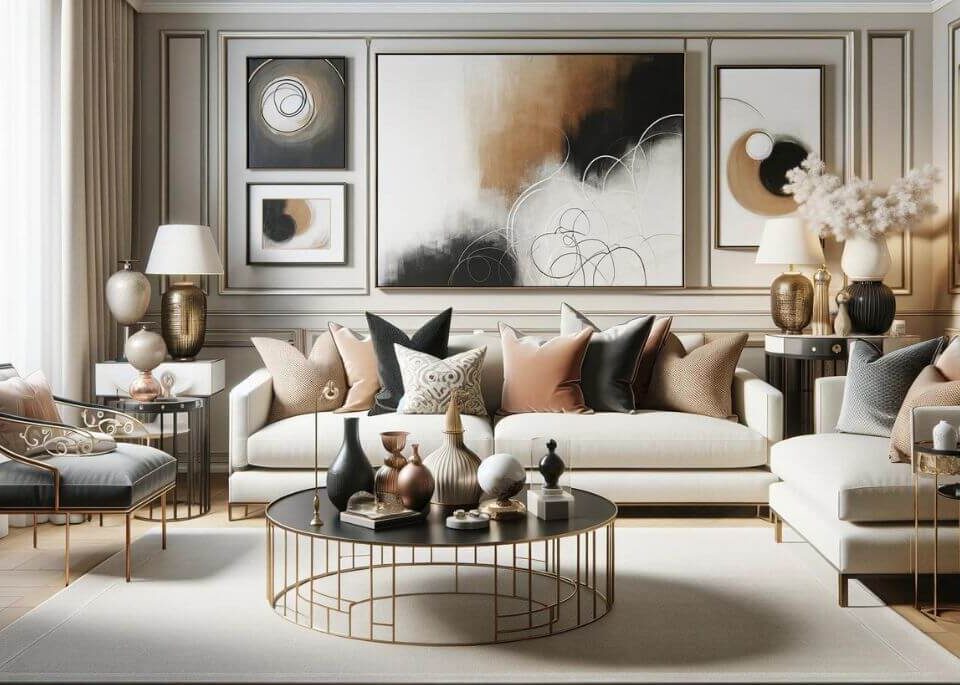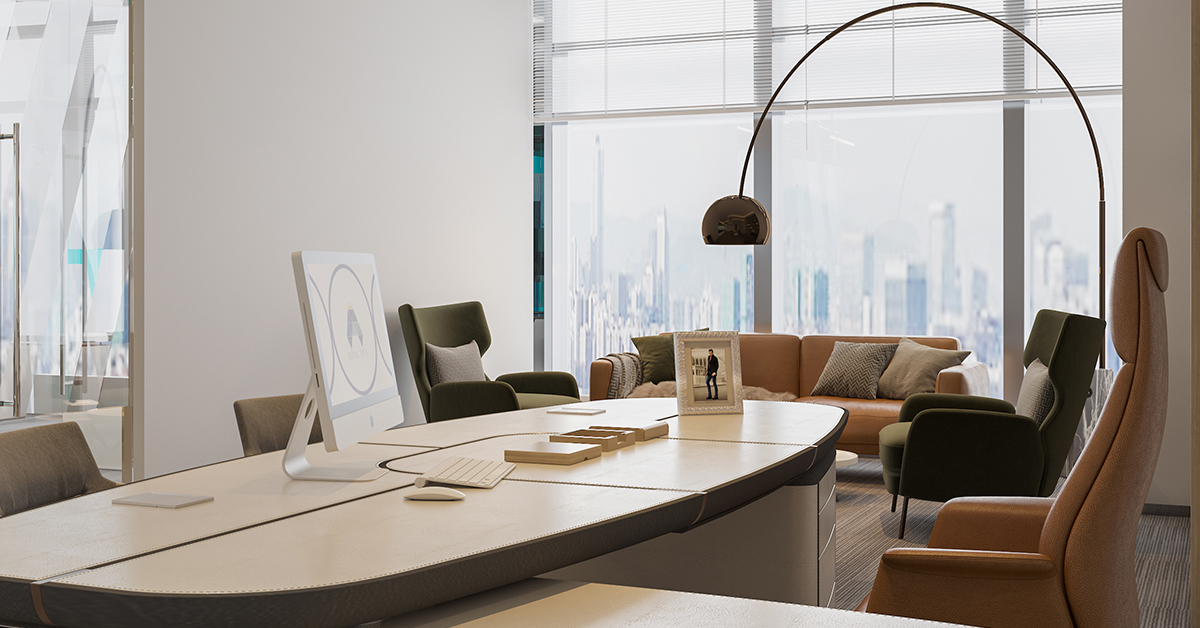
Interior Designer vs. Architect: Understanding the Differences in Design and Functionality
April 30, 2023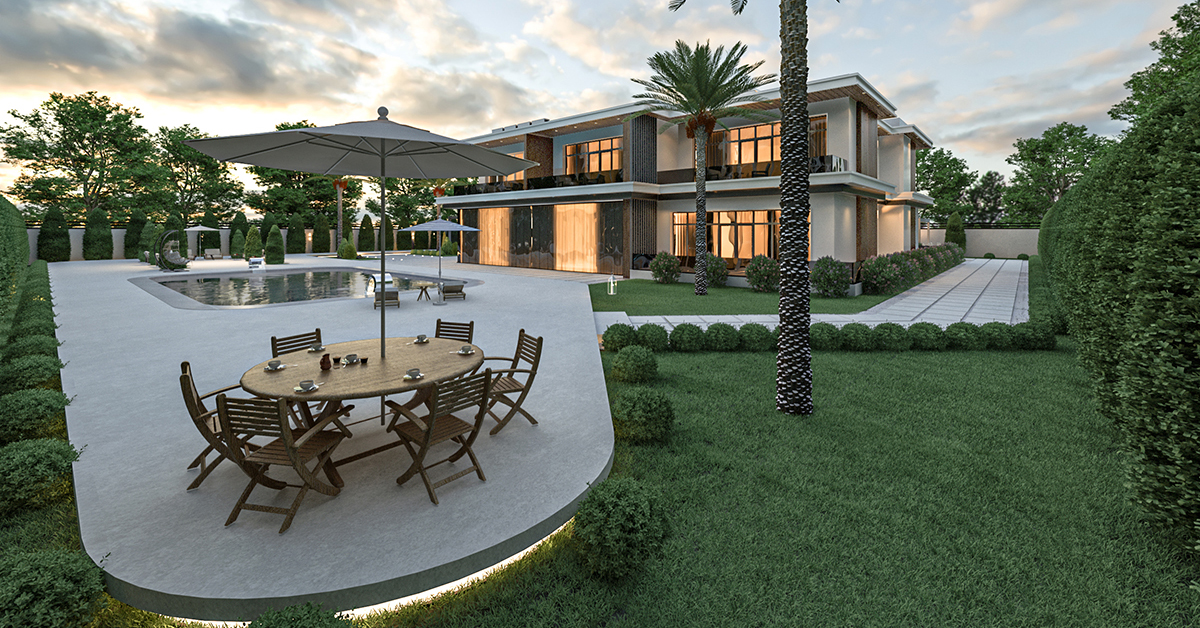
Landscaping Design: Elements, Types, and How to Create Your Own
May 2, 2023Interior Design Psychology: How to Use Colors and Textures to Create a Mood
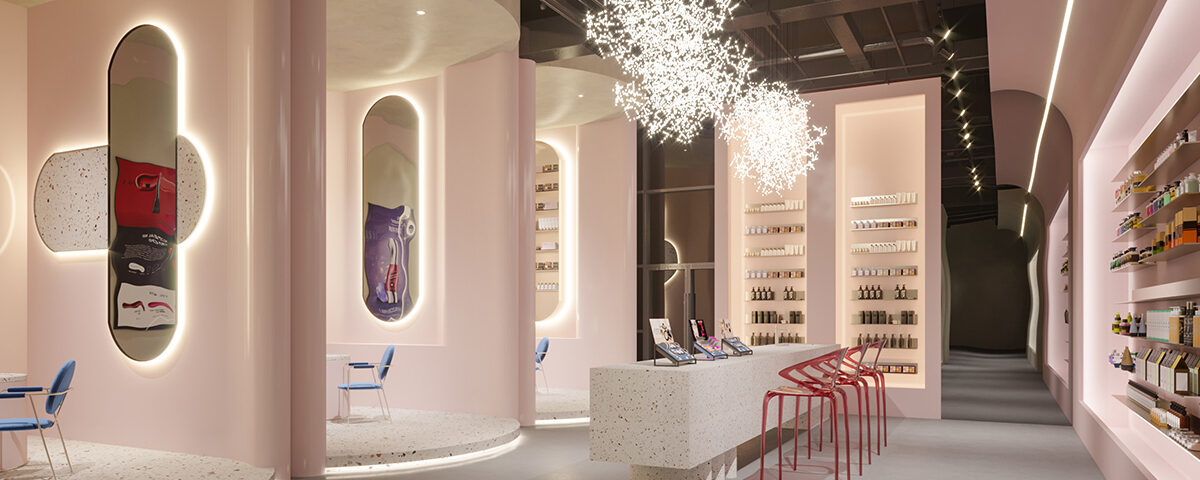
What is Interior Design and Why It Matters
Interior design is the art and science of creating a visually appealing and functional space. It involves a careful selection of colors, textures, lighting, and spatial arrangements to enhance the interior of a room. But interior design is not just about aesthetics; it also has a significant impact on human emotions.
The way we feel in a particular environment can affect our mood, behavior, and overall well-being. A well-designed interior can create an atmosphere that promotes productivity, relaxation, or creativity. For example, warm colors like red and orange can stimulate energy and passion while cool colors like blue and green can promote calmness and relaxation.
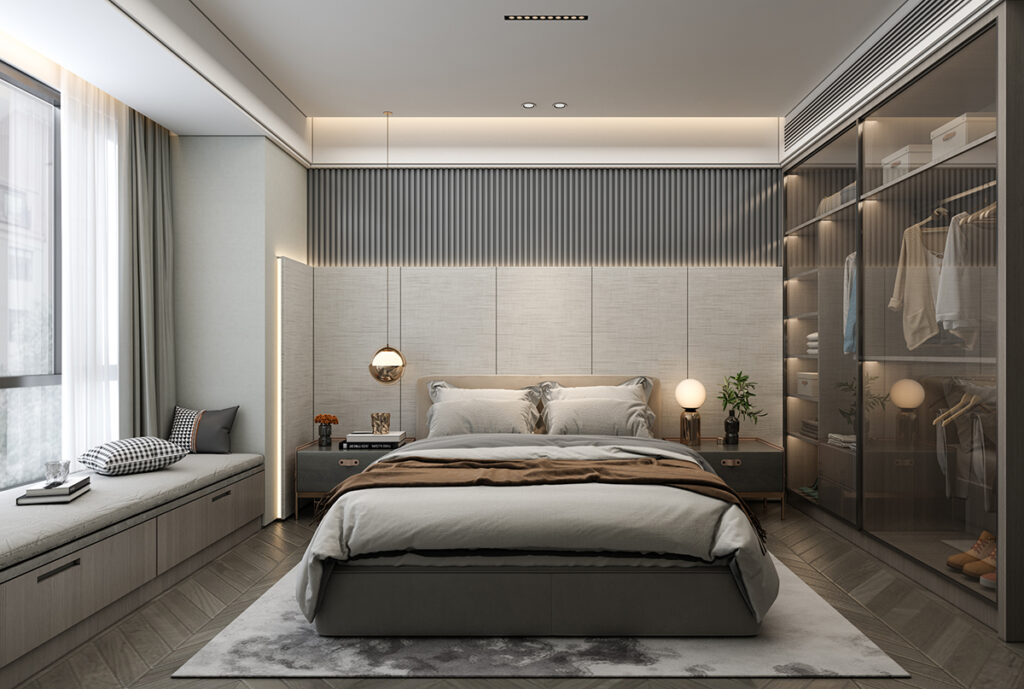
Lighting is another crucial element that can enhance or diminish the mood of a room. Proper lighting can make a space feel cozy or spacious depending on the desired effect. Textures such as soft fabrics or rough surfaces can also influence how people perceive a room.
The Power of Interior Design on Human Emotions
Colors, Lighting, and Textures
Colors, lighting, and textures are all important factors to consider when designing a space. Each of these elements can have a significant impact on mood and behavior. For example, warm colors such as reds and yellows can create a sense of energy and excitement while cooler colors like blues and greens can promote calmness and relaxation.
Lighting is another crucial aspect of interior design that affects mood. Natural light has been shown to boost productivity, enhance mood, and improve overall well-being. In contrast, harsh fluorescent lighting can cause headaches and eye strain.
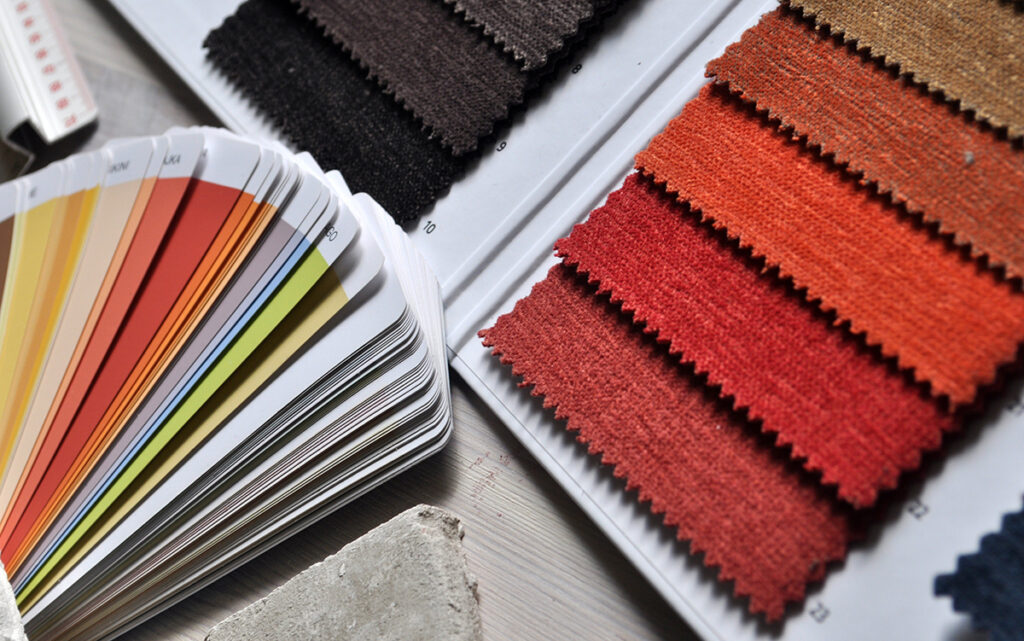
Textures also play an important role in interior design psychology. Different textures can evoke different emotions; for example, soft fabrics like velvet or cashmere can create a sense of comfort while rougher materials like stone or concrete may feel more rugged or industrial.
Layout and Functionality
The layout and functionality of a space are also essential considerations placing chairs in a circle encourages conversation while lining them up against the wall creates distance between people.
The intended use of the space should also be taken into account when designing it. A workspace should be designed differently than a bedroom or living room since the purpose is different. By understanding how people will use the space, designers can create environments that are both aesthetically pleasing and practical.
Promoting Positive Emotions
By considering all these factors together – colors, lighting, textures as well as layout & functionality – designers can create spaces that promote positive emotions such as happiness or calmness while reducing stress levels at the same time.
For instance, research has shown that incorporating natural elements into interior design such as plants or water features can reduce stress levels significantly by creating calming effects on our minds & bodies.
Similarly, designing spaces with ample natural light sources can help boost productivity and improve mood. Designers can also use colors to create a sense of relaxation or excitement depending on the intended purpose of the space.
Enhancing Well-being
The psychology of interior design can also play a significant role in enhancing overall well-being. For example, designing spaces that promote physical activity such as open floor plans or incorporating standing desks into workspaces can improve health outcomes.
In addition, designing spaces that encourage social interaction such as communal areas or shared workspaces can help reduce feelings of loneliness and isolation. This is particularly important for people who work from home or spend long hours alone in their homes.
Designing for Accessibility
Another aspect of interior design psychology is accessibility. By creating spaces that are accessible to everyone, designers can ensure that everyone feels welcome and included within the space. This includes considerations such as wheelchair accessibility, visual impairments, and hearing impairments.
By understanding how different individuals may interact with a space based on their unique needs, designers can create environments that are inclusive and welcoming to all.
How Colors and Textures Can Affect Our Mood
Colors and textures are two of the most important elements in interior design. They can transform a room from dull to vibrant, creating a style that reflects the subject of the space. The right combination of colors and textures can bring life to an interior space, making it feel warm and inviting.
Interior designers often use color theory as a guiding book to select the right hues and textures that complement each other. Color theory is based on the color wheel, which consists of primary, secondary, and tertiary colors. Primary colors are red, blue, and yellow; secondary colors are green, orange, and purple; while tertiary colors are created by mixing primary and secondary colors.
The term “color psychology” refers to the study of how colors affect human emotions and behavior. It is an important consideration in interior design because different hues can evoke different moods or emotions. For example, red is associated with passion and energy while blue is linked with calmness and serenity.
Taking the time to carefully select colors and textures can result in a well-designed interior space that evokes a desired mood or atmosphere. Let’s take a closer look at how this works:
Creating Warmth with Colors
Warm hues like reds, oranges, yellows, and browns create a cozy atmosphere in any room. These shades are perfect for living rooms or bedrooms where you want to relax after a long day at work.
For example, if you want to create a warm atmosphere in your living room, you might choose warm shades like burnt orange or deep brown for your walls. You could then add accent pieces like throw pillows or curtains in complementary hues like mustard yellow or rust.
On the other hand, cool tones such as blues or greens create a more tranquil environment that is perfect for bathrooms or home offices where you need to focus on work.
Creating Texture
Textures play an equally important role in creating mood within an interior space. Textures refer to surface qualities such as roughness, smoothness, softness, or hardness.
For example, if you want to create a cozy and inviting living room, you might choose a plush sofa with soft cushions. You could then add a fluffy rug and throw blankets to create an even more comfortable atmosphere.
In contrast, if you want to create a more modern and sleek environment in your home office, you might choose furniture with clean lines and smooth surfaces. You could then add texture through accessories like geometric vases or woven baskets.
Combining Colors and Textures
The key to creating a well-designed interior space is finding the right balance between colors and textures. Too much of one can overwhelm the other and create an unbalanced look.
One way to achieve balance is by using the 60-30-10 rule. This rule suggests that 60% of the room should be decorated in the dominant color (usually on walls), 30% in a secondary color (furniture or curtains), while the remaining 10% should be reserved for accent pieces such as throw pillows or artwork.
Another way to achieve balance is by using complementary colors. Complementary colors are opposite each other on the color wheel (e.g., blue and orange). When used together, they create a vibrant contrast that adds visual interest to any space.
Warm Colors and Their Effects on Emotions
Red, Orange, and Yellow: The Power of Warm Colors in Interior Design
Warm colors have been used in interior design for centuries. From the ancient Egyptians to modern-day designers, warm colors like red, orange, and yellow have been used to create a variety of emotions and moods in living spaces. In this section, we will explore the effects of these three warm colors on emotions.
Red: Passionate and Powerful
Red is a powerful color that can evoke strong emotions such as passion, love, and even anger. It is often used as an accent color in interior design to create a focal point or add drama to a space. However, too much red can be overwhelming and cause anxiety or stress.
In addition to its emotional impact, red has physical effects on the body as well. Studies have shown that exposure to the color red can increase heart rate and blood pressure. This may be why it’s often associated with passion and excitement.
When using red in interior design, it’s important to consider the overall mood you want to create. A deep shade of red can create a sense of luxury and sophistication in a bedroom or dining room, while a brighter shade of red can add energy to a kitchen or living room.
Orange: Warm and Inviting
Orange is another warm color that can create a sense of comfort and coziness. It is often used in living rooms and dining rooms to promote socialization and conversation. Like red, too much orange can be overwhelming.
Studies have shown that exposure to the color orange can increase appetite – which is why it’s often used in restaurants! It’s also been known to improve mood by promoting feelings of warmth and happiness.
When using orange in interior design, consider pairing it with cooler tones like blue or green for balance. A burnt orange accent wall paired with neutral furniture creates an inviting yet sophisticated look.
Yellow: Cheerful and Uplifting
Yellow is perhaps the most cheerful of all warm colors. It can evoke feelings of happiness and optimism, making it a popular choice for kitchens and bathrooms. However, too much yellow can be overly stimulating and cause anxiety.
Studies have shown that exposure to the color yellow can improve memory and concentration. It’s also been known to promote creativity and innovation.
When using yellow in interior design, consider pairing it with neutral tones like gray or beige for balance. A pale yellow living room paired with white furniture creates a bright and welcoming atmosphere.
Balancing Warm Colors
While warm colors like red, orange, and yellow can create powerful emotions and moods in interior design, it’s important to balance them with cooler tones like blue or green. This creates a harmonious and balanced space that promotes relaxation and calmness.
For example, a red accent wall paired with cool blue or green furniture creates a sophisticated yet calming look in a bedroom or living room. Similarly, an orange dining room paired with cool gray or beige accents creates an inviting yet elegant space.
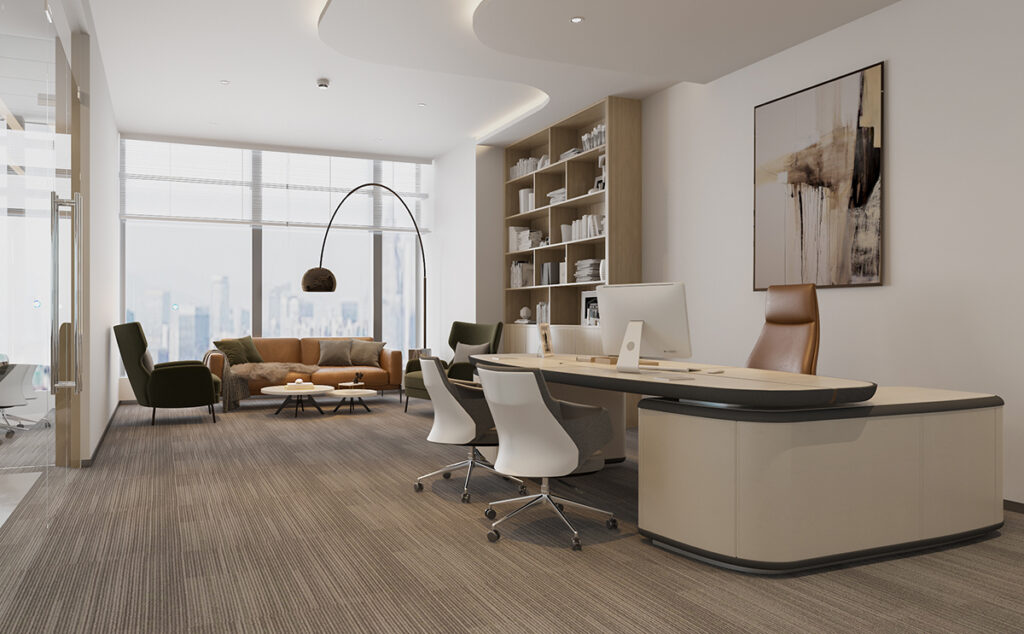
Nostalgia in Interior Design
Warm colors can also be used to create a sense of nostalgia in interior design. Shades of red and orange were popular in the 1970s, while shades of yellow were popular in the 1950s. Incorporating these colors into your home decor can evoke memories of those eras and add personality to your space.
Cool Colors and Their Effects on Emotions
Blue, Green, and Purple: The Cool Colors that Affect Emotions
Colors play an essential role in interior design. They can affect our emotions, moods, and even our physical well-being. Among the many colors available, cool colors like blue, green, and purple are popular choices for creating a calming and relaxing atmosphere in a space.
Blue is a Calming Color
Blue is often associated with calmness and serenity. It’s no wonder that it’s a popular choice for bedrooms and bathrooms where relaxation is key. Research has shown that blue can lower blood pressure and heart rate, making it an ideal color for spaces where people need to unwind.
Lighter shades of blue like baby blue or sky blue can make a room feel more spacious and airy. These shades are perfect for small rooms or spaces without much natural light. On the other hand, darker shades of blue like navy or royal blue can create a cozy atmosphere in larger rooms.
Green Brings Nature Indoors
Green is the color of nature and symbolizes growth, harmony, and balance. It’s believed to reduce anxiety and promote healing which makes it an excellent choice for spaces where people want to feel relaxed.
Using green in interior design can bring nature indoors which creates a sense of tranquility in the space. Lighter shades of green like mint or sage can make a room feel fresh while darker shades like forest green or olive green add depth to the space.
Purple: A Color of Luxury
Purple is often associated with luxury and creativity because it was once considered rare due to its limited availability in nature. However, purple also has calming effects on the mind and body which makes it an excellent choice for meditation rooms or spaces where relaxation is key.
Lighter shades of purple like lavender or lilac have soothing properties that help people relax while darker shades like eggplant or plum add drama to any space they’re used in.
Pairing Cool Colors with Warm Neutrals
When using cool colors in interior design, it’s essential to balance them with warm neutrals like beige or gray. This creates a harmonious look in the space and prevents it from feeling too cold.
For example, pairing blue walls with beige furniture and accessories can create a cozy atmosphere while still maintaining the calming effects of blue. Similarly, green walls can be balanced out with gray furniture and accessories to create an inviting space that feels grounded.
Consider Natural Light When Using Cool Colors
It’s important to consider the amount of natural light a room receives when using cool colors in interior design. Cooler tones can appear gray or dull in rooms with limited natural light which makes them less effective at creating a relaxing atmosphere.
To avoid this issue, use cool colors in spaces with plenty of windows or artificial lighting. This will ensure that the color remains vibrant and has its desired effect on people’s emotions.
Neutral Colors and Their Effects on Emotions
White, black, and gray are some of the most popular neutral colors used in American interior design. These colors are often chosen for their ability to create a calming and sophisticated atmosphere in a room. Each color has its own unique effect on emotions and can be used to achieve different design goals.
White is often associated with purity, cleanliness, and simplicity. It is a popular choice for minimalist designs in American homes because of its ability to create an open and airy feel. White walls can make a room appear larger than it actually is, which makes it perfect for small spaces.
One of the benefits of using white as the primary color in a room is that it provides a blank canvas for other colors to stand out. White walls allow furniture pieces or artwork to take center stage without being overshadowed by bold wall colors.
However, too much white can also have negative effects on emotions. A completely white room can feel sterile or clinical, which may not be ideal for creating an inviting space. To avoid this feeling, designers often incorporate textures or patterns into the space to add depth and interest.
Black and gray are two other popular neutral colors that can add depth and contrast to a room. Black is often associated with sophistication and elegance while gray is seen as calming and soothing.
In American interior design, these colors are often used as accent colors rather than the primary color in a room. Too much black or gray can lead to feelings of sadness or depression because they absorb light rather than reflect it like lighter hues do.
When using black or gray as accent colors, designers must balance them with lighter hues or pops of color to create a more inviting space. For example, adding colorful throw pillows or curtains against dark walls can help brighten up the space while still maintaining the sophisticated look that black or gray provide.
Neutral colors such as white, black, and gray are versatile choices when designing any style of home decor from modern apartments to traditional houses. They can be used to create a range of moods and emotions depending on how they are incorporated into the overall design.
For example, a room with white walls and minimal decor can feel clean and refreshing, while a room with black walls and bold accents can feel dramatic and moody. Gray walls paired with soft textures and natural materials can create a calming retreat-like atmosphere.
Choosing Colors for the Desired Mood or Atmosphere
Colors have the power to influence our emotions, behavior, and even physical reactions. This is why choosing the right colors for a space is crucial in creating the desired mood or atmosphere. Whether it’s a home, office, or any other type of space, selecting colors that align with the purpose of the room can make all the difference.
The impact of colors on mood and atmosphere
Colors have been studied extensively for their psychological effects on people. Warm colors like reds, oranges, and yellows are known to evoke feelings of warmth, energy, and excitement. These hues are often used in spaces where socialization and activity take place such as living rooms or dining areas.
On the other hand, cool colors like blues and greens are associated with calmness, relaxation, and serenity. They’re commonly used in bedrooms or bathrooms where people seek rest and rejuvenation.
Neutral colors like whites, grays, and beiges can create a sense of balance and harmony when used correctly. They’re versatile enough to be paired with any color scheme while providing a calming effect to any space.
Choosing colors based on purpose
When deciding on which color scheme to use for a particular space, it’s essential to consider its purpose. For example:
- Living rooms: Warm tones like reds or oranges can create an inviting ambiance perfect for entertaining guests.
- Bedrooms: Cool hues such as blues or greens can promote relaxation conducive to sleep.
- Home offices: Neutral shades like gray or beige provide an excellent backdrop for productivity without being too distracting.
- Kitchens: Brighter shades like yellows or greens can stimulate appetite while also making the area feel more lively.
- Bathrooms: Soothing pastels such as lavender or light blue can create a spa-like environment ideal for relaxation.
It’s important to note that these are just general guidelines; ultimately, personal preference should dictate color choices.
Considering lighting conditions
Another factor that affects how colors appear in a space is lighting. Natural light, artificial light, and even the time of day can all impact how colors are perceived.
For example, natural light can make colors appear brighter and more vibrant during the day. In contrast, artificial lighting can alter color perception by casting a yellow or blue tint depending on the type of bulb used.
It’s essential to test paint swatches or create a color palette beforehand to ensure that the final result aligns with the desired mood or atmosphere under different lighting conditions.
Testing paint swatches
When selecting colors for a space, it’s always best to test paint swatches before committing to a particular hue. This allows for an accurate representation of how the color will look in different lighting conditions and how it interacts with other colors in the room.
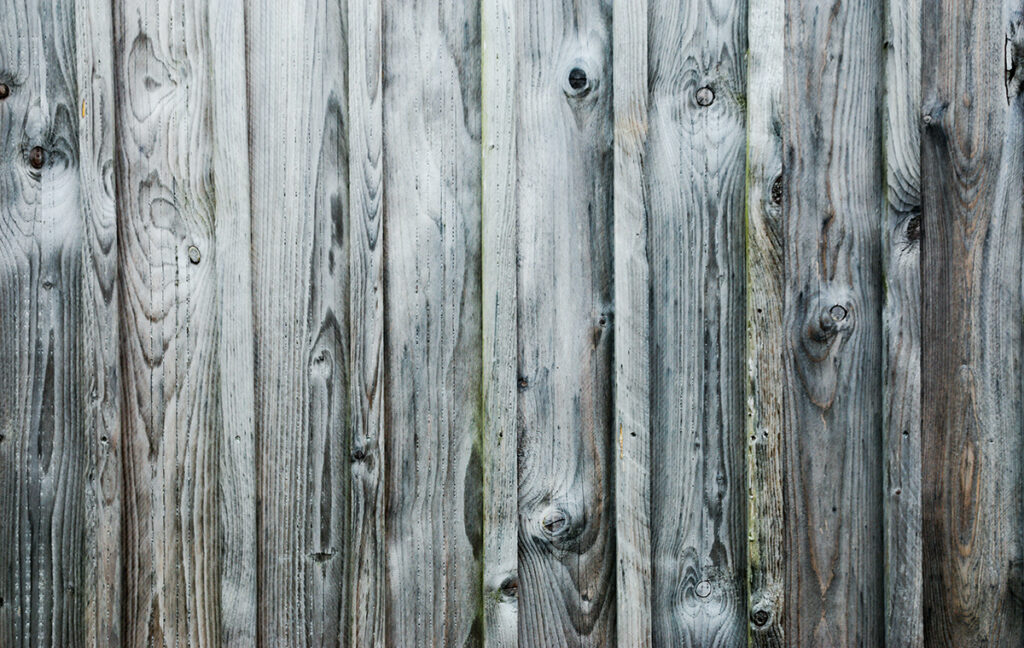
Creating a color palette
Creating a color palette is another effective way to ensure that all selected hues work together harmoniously. A color palette consists of several complementary colors that blend well together while also creating visual interest in the space.
The importance of choosing colors that align with the desired mood or atmosphere of a space has been recognized by many interior designers worldwide. For instance, according to an article published by Forbes Magazine, “Colors play an important role in creating ambiance and setting moods.” The article goes on to explain how specific hues affect people’s emotions and behavior.
A study conducted by Zillow found that homes painted in certain shades sold for more money than others. Homes painted blue bathrooms sold for $5,440 more than expected while houses painted grayish-blue kitchens sold for $1,809 more than anticipated.
Understanding Textures in Interior Design
Wood is a popular texture used in interior design for furniture and decoration. It has been used for centuries, and its timeless appeal continues to endure. Modern designs often incorporate sleek, clean lines and natural finishes that showcase the beauty of the wood grain. Wood can be used in many ways in interior design, from flooring to wall paneling to furniture.
One way that wood is frequently incorporated into modern design is through the use of minimalist furniture pieces. These pieces are designed with simple lines and shapes that highlight the natural beauty of the wood grain. They often feature clean edges and smooth surfaces that create a sense of calm and order in a space.
Another way that wood is used in interior design is through architectural elements like ceiling beams or exposed wooden rafters. These elements can add warmth and character to a room, while also creating visual interest by breaking up large expanses of plain walls or ceilings.
Metal textures can add an industrial edge to a space, with architectural elements like exposed pipes or metal-framed windows being popular choices. Metal accents can also be used as decorative touches on furniture or lighting fixtures. The use of metal textures in interior design has become increasingly popular over the past few decades, as more people have embraced modernist styles.
One example of how metal textures are being integrated into modern interiors is through the use of 3D rendering technology. This technology allows designers to create photorealistic images of spaces before they are built, allowing them to experiment with different materials and textures before committing to any one option.
Fabric textures are another important element in interior design, particularly making it feel more inviting and comfortable. Patterns and prints can also add visual interest by creating contrast against plain walls or furniture pieces.
One trend that has emerged recently in fabric texture trends is the use of bold patterns on upholstered furniture pieces. This trend is particularly popular in bohemian and eclectic styles, where a mix of patterns and colors is encouraged.
In addition to fabrics, other decorative arts like art can also be used to add texture and interest to a space. Artwork can be hung on walls or displayed on shelves, adding color and personality to a room. Sculptures and other three-dimensional pieces can also be used to create visual interest by breaking up large expanses of plain wall space.
Construction materials like concrete are also being used more frequently in modern interior design. Concrete floors, walls, and countertops have become increasingly popular in recent years due to their durability and versatility. They can be polished or left raw for an industrial look, or stained for a more natural appearance.
The Emotional Responses Elicited by Textures
Different textures can elicit different emotional responses from people. It is not uncommon for individuals to feel a certain way when they touch or see a particular texture. This is because our senses are closely tied to our emotions, and the textures we encounter can evoke feelings of comfort, luxury, ruggedness, authenticity, and more.
Taste plays a significant role in an individual’s preference for certain textures in interior design. For instance, someone who loves smooth and sleek surfaces may prefer minimalist designs with glossy finishes. On the other hand, those who prefer coarser textures may opt for rustic designs with exposed brick walls or natural stone floors.
Experience also shapes an individual’s emotional response to different textures. Someone who grew up around plush carpets and soft furnishings may associate these textures with comfort and warmth. In contrast, someone who grew up in a home with hardwood floors and leather furniture may find these materials more appealing.
Age is another factor that influences the emotional response to textures. Younger individuals tend to prefer smoother and softer textures as they associate them with comfort and safety. Older individuals may prefer rougher and coarser textures as they associate them with strength and durability.
Soft and plush textures like velvet can evoke feelings of comfort and luxury. Velvet has been used in interior design for centuries due to its softness, sheen, and rich color palette. From sofas to curtains to throw pillows, velvet adds a touch of elegance that few other materials can match.
Rougher textures like exposed brick or natural stone can create a sense of ruggedness and authenticity. These materials have been used in industrial-style homes or loft apartments where the goal is to create an urban vibe that feels raw yet refined at the same time.
In addition to their visual appeal, different textures also have tactile qualities that affect how we feel when we touch them. For example, running your fingers over a smooth surface like glass or polished metal can be calming while touching rough surfaces like sandpaper or burlap can be stimulating.
The emotional response to textures is not limited to just visual and tactile sensations. The sound of certain textures can also elicit an emotional response. For instance, the sound of a leather sofa creaking as you sit down can create a sense of comfort and familiarity.
Choosing Textures to Enhance Mood and Atmosphere
Consider the purpose of the space
When choosing textures for a room, it’s essential to consider the purpose of the space. The texture you choose should align with the function of the room. For example, a soft and cozy texture like velvet would be perfect for a bedroom, while a sleek and smooth texture like leather would be more suitable for a modern living room.
In a bedroom, comfort is key. Soft textures like plush carpeting or fluffy pillows can create a relaxing atmosphere that’s perfect for unwinding after a long day. In contrast, in an office or workspace, you may want to choose textures that are more durable and practical, such as leather or metal.
Look at the color scheme
Another factor to consider when choosing textures is the color scheme of the room. The texture you choose should complement the color palette of the space. If you have a neutral color palette, you can add interest by incorporating textures with different shades of the same color. Alternatively, you can use contrasting textures to create a bold statement.
For example, if your walls are painted in shades of beige or gray, adding textured throw pillows in cream or taupe can add depth without overwhelming the space. Similarly, if your walls are painted in bright colors like blue or green, pairing them with natural wood accents can create balance and harmony.
Think about lighting
The texture you choose can also affect how light is reflected in the room. Glossy textures will reflect more light and make the room brighter, while matte textures will absorb more light and create a more subdued atmosphere.
If your goal is to create an airy and bright space, glossy surfaces like mirrored furniture or polished marble floors may be ideal choices. On the other hand, if you’re looking for something cozier and more intimate, matte finishes like brushed metal or textured wallpaper may be better suited to your needs.
Consider overall style
When choosing textures for a room it’s important to consider its overall style. The texture you choose should align with the aesthetic of the space. For example, if you have a rustic style, natural textures like wood and stone would be appropriate, while if you have a minimalist style, smooth and simple textures like concrete and metal would be more suitable.
If your room has a bohemian vibe, consider incorporating textiles like woven rugs or tapestries to add warmth and texture. Alternatively, if your space is modern and sleek, opt for materials like glass or polished metals to create a clean and streamlined look.
Mix and match
Don’t be afraid to mix and match different textures to create interest and depth in the room. Combining rough and smooth textures can create contrast that adds visual interest to any space.
For example, pairing a rough-textured rug with a smooth leather sofa can create an eye-catching focal point in your living room. Similarly, combining soft fabrics like velvet with harder materials like metal or concrete can add dimensionality to your decor.
Don’t forget about comfort
While aesthetics are important when choosing textures for a room it’s also essential to consider comfort. Make sure that any fabrics or materials you choose feel comfortable to touch and use in everyday life.
When selecting furniture pieces like sofas or chairs make sure they’re upholstered in fabrics that are soft to the touch but also durable enough to withstand everyday wear-and-tear. Additionally, when choosing bedding or throw pillows opt for materials that are cozy but breathable so you can stay comfortable year-round.
Real-Life Examples of Mood-Enhancing Interior DesignInterviews with Experts in Interior Design and Psychology
Projects that use color and texture to create a desired mood
Interior design is all about creating spaces that are not only visually appealing but also functional. One of the most effective ways to achieve this is by using color and texture to create a desired mood or atmosphere. Whether it’s a hospital, restaurant, or home, the right combination of colors and textures can have a significant impact on how people feel in that space.
For example, let’s take a look at the interior design of hospitals. Hospitals are often associated with stress and anxiety, which is why it’s important for patient rooms to be designed in a way that promotes healing and relaxation. By using calming colors such as blues and greens, along with soft textures like plush bedding and curtains, patients can feel more comfortable during their stay. In fact, studies have shown that patients who are surrounded by calming colors and textures tend to require less pain medication than those who are not.
Another area where color and texture play an important role is in restaurants. The right combination of colors and textures can help set the tone for the dining experience. For example, warm tones like reds and oranges can create a cozy atmosphere while cool tones like blues and greens can create a more relaxed vibe. Textures such as exposed brick walls or natural wood finishes can add warmth and character to the space.
Other areas where color and texture are important
While color and texture are often associated with interior design, they can also be important in other areas such as branding and marketing. Companies use color psychology to evoke certain emotions or associations with their brand. For example, blue is often used by banks because it conveys trustworthiness while red is used by fast-food chains because it stimulates appetite.
The importance of balancing color and texture
While using color and texture can be effective in creating a desired mood or atmosphere, it’s important to strike a balance between the two. Too much of one element can overwhelm a space and detract from the overall design. For example, if a restaurant uses too many bold colors or patterns, it can be overwhelming for diners and take away from the dining experience.
One project that effectively balances color and texture is the interior design of the Ace Hotel in New York City. The hotel’s lobby features a mix of textures such as exposed brick walls, leather sofas, and vintage rugs. The use of warm tones like browns and oranges creates a cozy atmosphere while pops of bright colors like yellow and blue add visual interest without being overpowering.
Interviews with interior designers, color experts, and psychologists to gain insights into their processes for creating mood-enhancing spaces
Interior designers, color experts, and psychologists are all professionals who play a crucial role in creating mood-enhancing spaces. By working together, they can create spaces that evoke specific emotions and moods that positively impact mental health and well-being. In this section, we will delve into interviews with these professionals to gain insights into their processes for creating such spaces.
Interior Designers Share Their Creative Process
Interior designers have the skills to transform any space into a haven of relaxation or productivity. They work with clients to understand their needs and preferences while keeping in mind the overall design goals. A designer’s creative process involves selecting colors, furniture, lighting, and other elements that complement each other while also meeting the client’s requirements.
For example, Design Denver is one of the leading interior design programs in Colorado that focuses on developing students’ skills in designing functional yet aesthetically pleasing spaces. Interior designer Havenly Designer emphasizes the importance of understanding clients’ personalities when designing a space. She believes that by incorporating personal touches such as artwork or family photos, she can create a space that reflects her clients’ unique personalities.
Color Experts Discuss The Psychology Behind Color Choices
Color experts play an essential role in creating mood-enhancing spaces by using colors to evoke specific emotions and moods. They understand how different colors impact people’s feelings and emotions and use this knowledge to select colors for different areas of a space.
For instance, Design Los Angeles is one of the top design schools in California that teaches students about color psychology. Color expert Karen Haller explains how colors can affect our mood: “Red is energizing; blue is calming; yellow is cheerful.” She suggests using warm tones like reds and oranges for social areas like living rooms or dining rooms because they promote conversation and connection.
Psychologists Offer Insights Into How Design Can Affect Mental Health And Well-Being
Psychologists study human behavior and mental processes to help us better understand how design can impact our mental health and well-being. They offer insights into how designers can create spaces that promote relaxation and positivity.
For example, Dr. Sally Augustin is a design psychologist who explains how natural elements like plants or sunlight can positively impact our mood. She suggests incorporating natural elements into interior design to create a sense of calm and tranquility.
Interviews With Interior Decorators Reveal Their Skills In Working With Clients
Interior decorators are skilled in working with clients to understand their needs and preferences while also managing projects from start to finish. They have experience in project management, development, and communication.
For instance, Havenly Designer emphasizes the importance of clear communication when working with clients: “I always make sure I understand exactly what my clients want before starting any project.” By doing so, she ensures that her clients are satisfied with the final result.
Recap of the Importance of Understanding Interior Design Psychology
Understanding the psychology of interior design is crucial in creating spaces that evoke emotions and promote well-being. Interior designers who have a deep understanding of psychology can create spaces that cater to the specific needs of their clients, whether it be in residential, commercial, or healthcare design.
In healthcare design, understanding the psychological impact of colors, lighting, and spatial layout can aid in promoting healing and reducing stress for patients. Studies have shown that certain colors have a calming effect on patients while others may cause anxiety or agitation. For example, blue has been found to lower blood pressure and heart rate while red has been linked to increased heart rate and blood pressure. Lighting also plays a significant role in healthcare design as it affects mood and circadian rhythms. Natural light has been proven to improve patient outcomes by reducing depression rates and shortening hospital stays.
In commercial design, understanding consumer behavior is essential when designing retail spaces. A well-designed retail space can increase sales by creating an inviting atmosphere that encourages customers to stay longer and spend more money. The use of color psychology is particularly important in retail design as it can influence purchasing decisions. Warm colors such as reds and oranges are often used to stimulate appetite in restaurants while cool colors like blues are used to create a relaxing atmosphere in spas.
The interior design profession has evolved to recognize the importance of psychology in creating functional and aesthetically pleasing spaces that enhance the quality of life for individuals. Interior designers now receive training on how to incorporate psychological principles into their designs.
One example of this is biophilic design which incorporates natural elements into indoor environments such as plants or water features. This type of design has been found to reduce stress levels, improve cognitive function, and increase productivity.
Another example is sensory design which takes into account how different textures, sounds, smells, tastes, and visual stimuli affect people’s moods and behavior. Sensory design is particularly important in healthcare settings where patients may experience heightened sensitivity to their surroundings.
Final Thoughts and Key Takeaways
In conclusion, understanding the psychology of interior design is crucial in creating mood-enhancing spaces. Colors and textures are powerful tools that can be used to evoke emotions and set the tone for a room. Warm colors like red, orange, and yellow can create a cozy and inviting atmosphere, while cool colors like blue, green, and purple can promote relaxation and calmness. Neutral colors such as white, black, and gray can provide a clean slate for other elements to shine.
When choosing colors and textures for a space, it’s important to consider the desired mood or atmosphere. For example, if you want your living room to feel warm and welcoming, incorporating warm colors like reds or oranges with soft fabrics like plush cushions or throws can achieve this effect. On the other hand, if you want your bedroom to feel serene and peaceful, cool blues or greens with smooth textures like silk or satin may be more appropriate.
Case studies have shown that effective use of color and texture in interior design can have a significant impact on people’s emotions. Hospitals that incorporate soothing colors like blues or greens with natural materials like wood have been found to reduce stress levels in patients. Restaurants that use warm lighting with textured walls have been shown to increase appetite among diners.
To gain further insights into creating mood-enhancing spaces through interior design, interviews with experts in color theory and psychology can be valuable resources. By learning from their experiences and processes for selecting colors and textures based on desired moods or atmospheres of spaces they work on.
Incorporating these ideas into your own projects when designing new spaces such as houses or buildings could be a great way to create an environment that is both aesthetically pleasing as well as emotionally fulfilling.
If you’re looking for inspiration on how to apply these concepts in practice then checking out the latest lookbook from top designers such as Liz could be your best decision yet! See details online today!
FAQs
1. What is Interior Design Psychology?
Interior design psychology focuses on how the design of a space influences human emotions and behaviors. It combines elements like colors, textures, and layout to create environments that enhance well-being and mood.
2. Why are colors so important in interior design?
Colors significantly impact our mood and emotions. Warm colors can energize and stimulate, while cool colors often promote relaxation and calm. Choosing the right colors for a space depends on the desired emotional effect.
3. How does lighting affect the mood of a room?
Proper lighting can transform a space, enhancing feelings of warmth and comfort, or making a room feel spacious and serene. Natural light boosts productivity and mood, whereas poor artificial lighting can lead to discomfort like headaches.
4. What role do textures play in interior design?
Textures influence the feel and appearance of a space. Soft textures like velvet or cashmere bring comfort and luxury, while rough textures like stone or concrete offer an industrial and rugged feel.
5. Can the layout of furniture impact emotions?
Yes, the arrangement of furniture can encourage specific behaviors, such as placing chairs in a circle to foster conversation or using open spaces to promote movement and interaction.
6. What is the 60-30-10 decorating rule in interior design?
This rule helps create a balanced color palette within a space. It suggests that 60% of the room should feature the dominant color, 30% a secondary color, and 10% an accent color to create a harmonious look.
7. How do natural elements affect interior design?
Incorporating elements like plants or water features can reduce stress by creating a calming effect, enhancing the connection to nature, which is soothing for most people.
8. What considerations should be made for accessibility in design?
Accessible design ensures that everyone, regardless of ability, can comfortably use a space. This includes accommodating visual or hearing impairments, and mobility challenges, ensuring environments are inclusive.
9. How does the choice of color impact a workplace?
Color choices in a workplace can affect productivity and mood. For example, blue tones can reduce stress and enhance focus, making them ideal for office settings.
10. What are some tips for combining colors and textures?
To achieve a balanced interior, use complementary colors and mix textures wisely. For instance, a smooth, soft sofa fabric can be paired with a rough-textured rug to add depth and interest to a living room.

